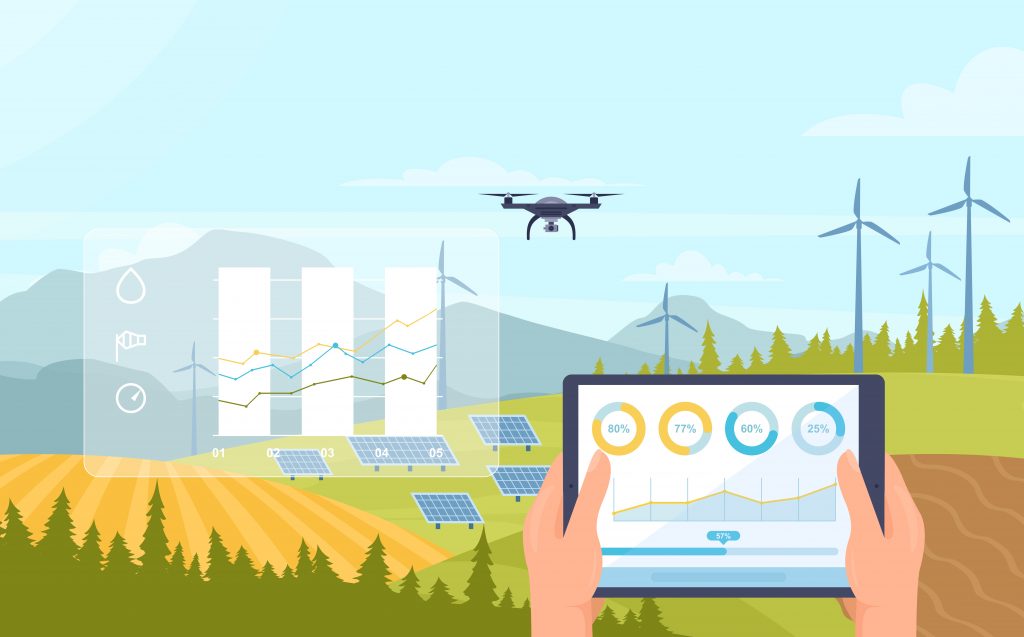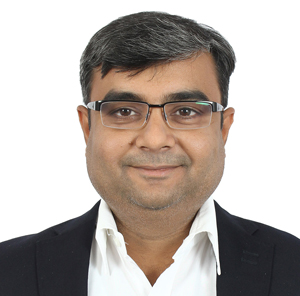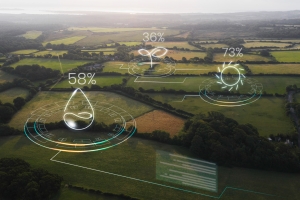India ranks in second place for farm outputs worldwide, and 42% of Indians are engaged in the agriculture sector. It’s pretty clear that India is a country that is highly dependent on this sector. This, says Ritesh Sutaria, director at Prompt Equipments Pvt Ltd., is a sector that has a big impact on the country’s need to grow by shifting from outdated methods.
With the growing need and population, it has become mandatory to change the system. According to the UN, the world’s population will be around 9.7 billion by the end of 2050, which will drive global agriculture production to increase by 69% from 2010 to 2050.
The only possible way to transform agriculture is by adopting the latest technologies. Sensor systems in agriculture are the one way to introduce smart agriculture.
Do you have any idea about smart agriculture?
There are many ways to introduce technology to agriculture, but when the Internet of Things (IoT) is added or integrated with agriculture, it comes out as smart agriculture.
Sensors are employed to collect environmental and machine metrics and deliver them to farmers to make informed decisions to boost their work, whether related to livestock or crop farming. The ultimate aim is to improve the quality and quantity of the crops without wasting time and optimising the use of human resources.
Why add sensor systems in the agriculture business?
Well, we can simply answer this question with a word that is data.
The most substantial advantage of adding these sensors to agriculture is that they collect an immense amount of data.
Knowing the soil condition, weather condition, crops’ health, and growth can prove to be a turning point. We agree that farmers know best about their crops and lands, but sometimes it becomes challenging to detect the problems, and in this case, sensors can help the farmers.
These sensors keep track of the whole system 24/7 to deliver the necessary data to farmers. The data empowers farmers to make informed decisions that will support businesses with better cost management, waste reduction, and water conservation due to overproduction.
In fact, IoT will assist farmers in improving yield and fulfilling the population’s growing demand. We can say that IoT is absolutely ready to improve the future of agriculture. IoT has already become part of many farmers of different countries. Let’s see how this super technology can help farmers.
Climate
Weather is one of the important parameters that cannot be controlled. Therefore, weather stations are very helpful and most embraced smart agriculture gadgets. Weather stations integrated with temperature and humidity sensors play a vital role in smart agriculture monitoring environmental conditions.
These sensors provide crucial information that can be used to map climatic conditions to select suitable crops.
In fact, weather can also be predicted by combining application program interfaces (APIs) into the sensor system gateway to take preventative actions against unpleasant climatic conditions.
Soil
Soil is another factor that impacts crop quality. Some sensors can inform about the properties of the soil. Different aspects of soil can be measured using different sensors like:
1. Optical sensors: These sensors utilise light to measure soil properties and can determine the organic matter, clay, and moisture content.
2. Electrochemical sensors: These sensors inform about the content of O2, CO2, and other essential gases, along with pH and soil nutrient levels. Sensor electrodes infiltrate into the soil to find specific ions in the soil. Knowing the available nutrients in the soil can help a farmer grow the right crop.
3. Dielectric sensors: These sensors measure the moisture content present in the soil. Using this, farmers can know the soil moisture and can irrigate it when needed. This also enhances water management. It is also used to know the pH value of the soil.
Pesticide
Pesticides are important in farming to keep the crops pest-free. However, it is also important to add pesticides in the right amount. Adding a small extra amount can harm the plant and contaminate the soil and water. The repetitive addition of excess pesticides makes the bugs and insects resistant to them; ultimately, farmers have no other option than to use heavier pesticides.
Image capturing sensors can help farmers in this situation. Firstly, they are cheap and, secondly, very efficient in detecting pests. Using the image, farmers can know the infected area and take proper measures to remove them.
Gas sensors can also be employed to catch pests. Plants release a certain type of volatile gases when they are stressed. The chemical released differs for different types of stress. In case of a pest attack, crops release different gas, which can be studied beforehand to avoid the situation before it’s too late.
Cattle tracking and traceability

Cattle are also part of farming; they can even be monitored to ensure good health and produce better yields. IoT integrated smart collar solution is the best way to track the health and location of the cattle. The sensor-based collar monitors the health and activities of the cattle. It informs the farmer about the heat stress of the cattle and the best time for artificial intelligence. It even informs about the change in the behavior of the cattle and the possible diseases.
Besides this, smart collar solutions also help a farmer keep track of the cattle’s movement. It informs about the real-time location of the cattle and reduces the chance of missing. In this way, the smart collar solution reduces human resource costs and eliminates the chances of error. The data gathered from different sensors are analysed and visualised for other purposes. These data are then sent to the IoT dashboard, which obtains data in real-time and changes it into human-readable language. Data collected in real-time supports farmers in making informed decisions.
Characteristics of smart agriculture
- Automatic Irrigation of Soil
It is assumed that soon humans will face water crises, so it has become necessary to utilise water efficiently. Using sensors to detect soil moisture levels will help use the water effectively and efficiently. This will also ensure a better yield of the crop. This system involves a water pump that sprinkles water based on the data shared by the sensor about moisture, temperature, and humidity.
- Soil nutrient data
Soil is rich in nutrients needed for crop growth. Soil’s chemical property, physical property, moisture level, temperature, nitrogen presence, and phosphorous and potassium impact the yield. In case of deficiency, the farmers add fertilised, and often they add more or less, ultimately dealing with the not-so-good yield. So, sensors are implanted to monitor soil health and inform the farmer about the need for fertiliser.
- Agricultural drones
Today, drones are embedded with sensors and cameras for imaging, mapping, and surveying purposes. There are ground-based and aerial drones to monitor crop fields. Ground one surveys the field on wheels. Aerial drones are remotely controlled or fly automatically through software-controlled flight plans and provide information about the field.
Farmers can get information about irrigation, crop health, spraying, soil, planting, and field from the data gathered from the drones.
- Smart greenhouse
Greenhouse farming boosts the growth of vegetables and fruits by controlling the environmental parameters through manual intervention. But this whole system demands a lot of energy and labour costs without promising a great result. A smart greenhouse is built with IoT, monitors, and controls the environment without manual intervention.
Different sensors are engaged to measure the important parameters and thus maintain the inside environment of the greenhouse.

- Predictive analytics
Crop prediction based on weather, soil requirement, humidity, etc., is essential for the farmers to decide the agricultural schedule for the entire year. Sensors collect information about soil, weather, rainfall, temperature, and humidity to predict everything necessary for a good yield. All the collected data is then analysed, and the farmer decides accordingly.
Thus, we can conclude that the addition of the latest technologies like IoT will help farmers in improving their yields.
The author is Ritesh Sutaria, director at Prompt Equipments Pvt Ltd.
Comment on this article below or via Twitter: @IoTNow_OR @jcIoTnow










